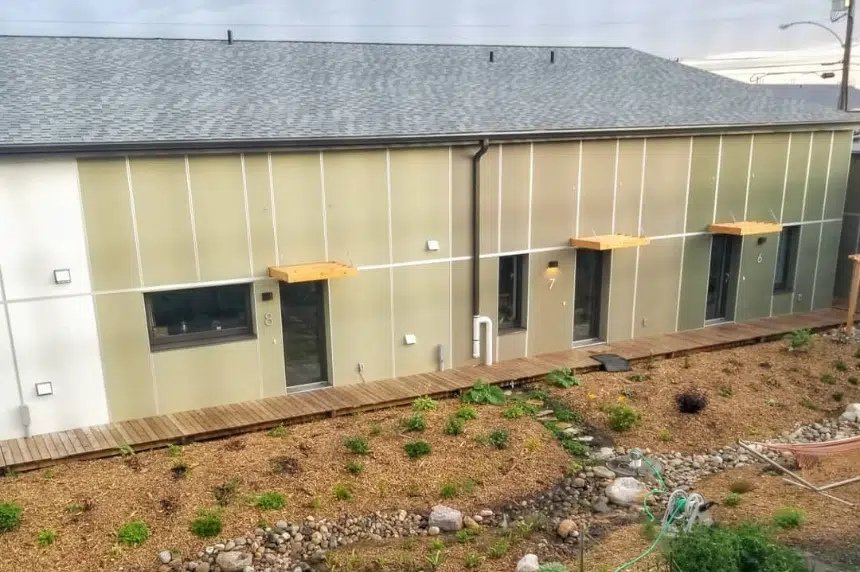Many people in Saskatoon raised concerns when a new municipal climate action master plan was introduced on Thursday.
Of the many action items listed in the multiple phases of the 30-year plan, residents in the Bridge City had a hard time believing a cap on heating and electrical bills each year would work in a province that spends five months of the year in a deep chill.
Closer investigation shows that it’s not only possible, but that it’s happening already.
Radiance Cohousing, an energy-efficient townhouse building in Riversdale, is leading the way when it comes to efficient and sustainable living in Saskatoon.
What separates Radiance from other energy-efficient housing projects is its path to eventually be certified as a passive house. Passive housing, also known as net-zero housing, is an international standard that uses roughly a tenth of the energy a typical Canadian home would use.
Michael Nemeth helped organize the co-operative housing project over a number of years before residents moved in last November.
“We don’t even need to connect to natural gas here because the heating requirement is so small,” Nemeth said, pointing to one of the many features that severely cut down on costs while keeping the home as energy-efficient as possible.
Instead of a typical boiler system, Radiance uses electric heating pumps that use low amounts of energy while transferring outdoor cold air into hot air with temperatures as low as -20 C.
The townhouse complex was built airtight. Walls are 18-inches thick with a more substantial insulation and high-quality triple pane windows — this makes the entire building thermal bridge-free to avoid any spots where air could escape or cause temperature to drop.
“It’s like building a thermos — something that will stay warm in the winter and cool in the summer,” Nemeth said.
Using the latest technology also allows for a certain level of resiliency. Mold isn’t an issue with passive housing standards, and power outages won’t drastically impact these draft-free homes.
“It’s not just energy efficiency, it’s about building a healthy, comfortable home,” he said. “When it’s 40 below outside, our windows are still kind of warm to the touch. It’s pretty amazing when they’re built that way.”
Nemeth said all of those features only added six per cent to construction costs when compared to conventional construction. Residents at Radiance had to plug in electrical heaters when the winter temperatures dipped to -25 C.
These ideas may seem like they’re arriving from far away locations, but Canada has a rich history in passive housing. In fact, Saskatchewan is the founder of this type of initiative in the country. Canada’s first passive house was built in 1977 when the Saskatchewan Conservation House opened as a response to the energy crisis in the 1970s.
Technology and associated construction costs have made passive housing more affordable since the groundbreaking project in Regina more than 40 years ago. Reaction to passive housing is something Nemeth comes across in his daily work as a mechanical engineer.
“If we do things right, we can save money. So the reaction ends up being: ‘Wow, I didn’t know that we could build a net-zero energy building for no extra cost.’ That’s what we’re finding on the bigger projects,” he explained.
Nemeth consulted on the construction of the new Souls Harbour Rescue Mission building in Regina. By switching away from a boiler to a few furnaces, roughly $180,000 was saved on the heating systems for the 20,000-square-foot (approximately 1858 sq. meter) building.
“It’s not about giving things up, it’s about gaining. Gaining comfort and resilience,” Nemeth said.











